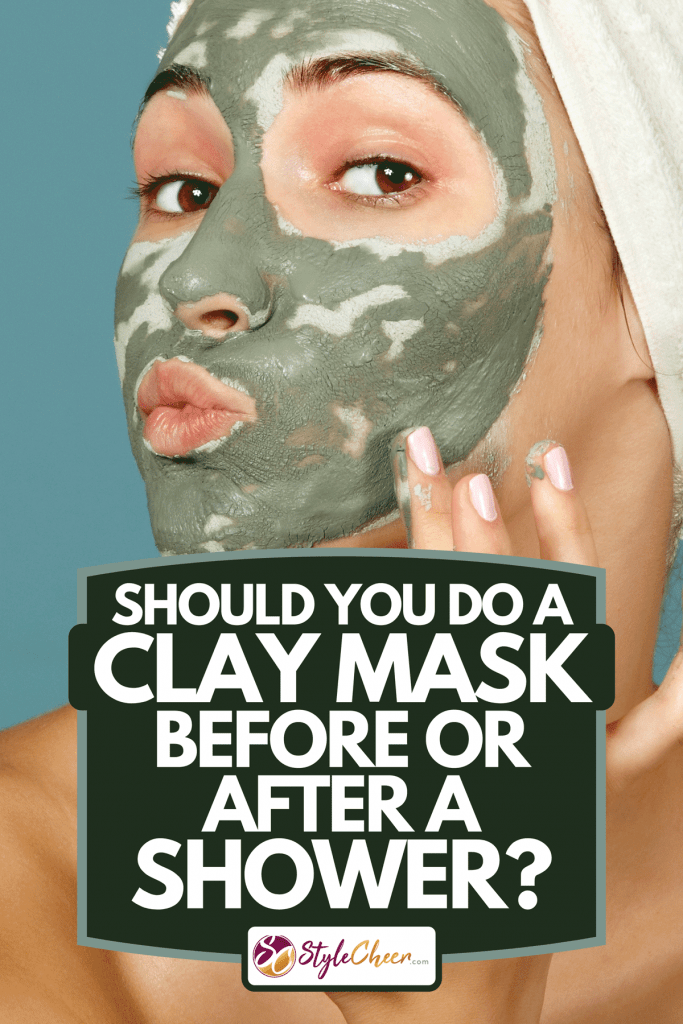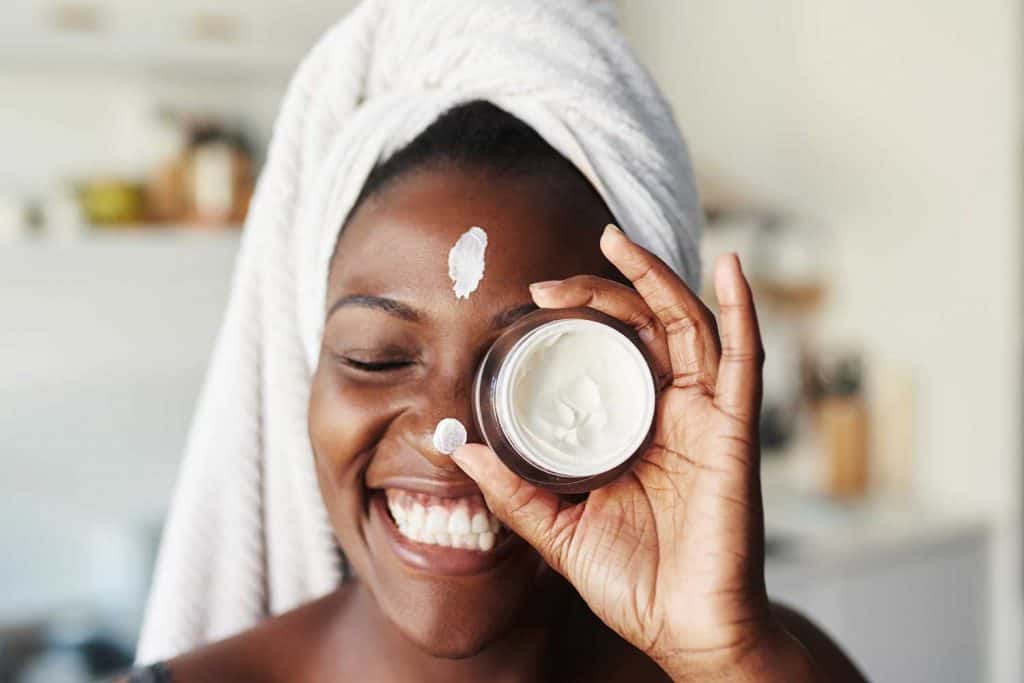As more people are beginning to realize the importance of self-care, many brands are developing clay masks. Clay masks have many benefits for the skin, but a question that many users have is when to use one: before or after a shower? We've done the research to help you learn the proper time to apply a clay mask.
The right time to apply a clay mask ultimately depends on what type of skin you have. For most skin types, it is best to apply a clay mask after you shower. However, other skin types may find it beneficial to do a clay mask while you shower.
In this article, we'll provide more details on when and how to apply a clay mask, as well as the benefits. We'll also share some different types of clay masks and provide instructions on what to do after applying the mask. Continue reading to learn more.

This article may include affiliate links and elements that were carefully created by our team using advanced ai to help you envision the best style advice.
Should You Apply A Clay Mask Before Or After A Shower?

Clay masks are designed to provide a deep cleanse of your pores, so they are best done while your pores are open. Pores open up when exposed to hot water. However, whether you apply the mask before you take a shower depends on your skin type. Let's look at the pros and cons of applying a clay mask before you shower versus after.
Before Showering
Applying a clay mask before you take a shower is a great option because clay masks need to sit on your skin to be most effective. If you apply the mask beforehand, the mask will have time to harden as you prepare to shower. Then you can wash it off as you shower.
You can also apply the clay mask during the shower, but this can be tricky unless you have a mirror in there with you. The moisture from the shower can also interfere with how long it takes the mask to dry.
If you choose to apply the clay mask before or during the shower, you must wash your face first. Otherwise, the mask will trap dirt and oil in your pores instead of cleaning them. Also, applying the mask in the shower works best for people with dry skin, as the mask can help lock in moisture from the shower.
After Showering
The recommended time for applying a clay mask is after you shower, especially if you have oily or combination skin. This is because your pores are more open due to the hot water and steam from the shower. Ideally, you will have also already washed your face during your shower.
You can also more easily time how long the mask has been on your face, and you won't have added moisture to interfere with the drying time. The downside to doing a clay mask after you shower is that some people find it inconvenient since you now have to add more time to your routine.
How To Apply A Clay Mask
No matter what time you choose to apply a clay mask, it's helpful to know how to apply one properly to be effective. Follow these steps to learn how to apply a clay mask:
- Use a facial cleanser to remove dirt, oil, and makeup from your face.
- Apply a thin layer of clay mask to your face. The thicker it is, the longer it will take to harden.
- Avoid applying the mask around your eyes and lips.
- Leave the mask on until it has thoroughly dried. It could take anywhere from 5 to 15 minutes for clay masks, depending on how thick you applied it.
- Rinse the mask off with warm water and a soft cloth.
See More: Do Face Cleansers Remove Makeup?
Do You Wash Your Face After A Clay Mask?
As long as you've rinsed and wiped the mask off with a cloth after it has dried, it is not necessary to rewash your face with a facial cleanser afterward. When clay masks harden, they pull any dirt and makeup out from deep in your pores. This can dry out your skin. Washing again with a cleanser could cause your face to dry out even more.
Should You Moisturize After A Clay Mask?

Instead of rewashing your face after a clay mask, it is recommended that you moisturize. Due to the drying nature of clay masks, moisturizing is essential to rehydrate your skin. No matter what type of skin you have, a moisturizer containing emollients is your best option.
Emollients include things such as mineral oil, coconut oil, or shea butter. If you have oily or combination skin, look for a moisturizing lotion that contains one of those ingredients. Lotions are fast-absorbing and thinner. They contain more water so that they won't leave excess oil on your skin.
If you have dry skin, a moisturizing cream containing one of those ingredients is better. Creams contain almost equal amounts of water and oil. They are slow-absorbing, so they lock moisture into your skin for longer. If your skin is cracked, you can use an ointment. Ointments are oily and will coat the skin to reduce or eliminate cracking.
See More: Should You Moisturize After A Clay Mask?
When Should You Use A Clay Mask?
When and how often you use a clay mask again depends on several factors, including:
- Your skin type
- Your age
- Time of year
We will cover these factors in more detail to determine how each one affects the usage of a clay mask.
Skin Type
Since clay masks have different effects depending on skin type, this is perhaps the most critical factor when deciding when to do a clay mask. The main skin types are oily, combination, dry, and sensitive.
Oily or combination skin is more prone to breakouts due to having more oil on some regions of your face. People with either of these skin types may find it necessary to use clay masks more often. People with oily skin can get away with using a clay mask up to three times a week, while people with combination skin should use one up to twice a week.
If you have dry or sensitive skin, you must be careful when using a clay mask because it can dry your skin out even more or stress your skin. It's important that you use a clay mask no more than once a week or switch to a more hydrating mask for your skin.
This moisturizing gel face mask with hyaluronic acid works great on dry skin. Click here to see it on Amazon.
Age
The older you get, the less often you should use a face mask. This is because your skin loses elasticity as you age. Using a clay mask can dry out your skin, which doesn't help make skin more elastic. Instead, you should use a moisturizing mask to hydrate your skin. You can also try an exfoliating mask to help brighten your skin or an anti-aging mask to slow skin aging. No matter which mask you choose, apply it no more than twice a week.
Click here to see this exfoliating mask on Amazon.
Time Of Year
During the winter, skin is naturally drier due to the lack of moisture in the air. When it is cold outside, avoid using a mask more than once a week, if at all, especially if you have dry skin. Instead, opt for a moisturizing face mask.
When there is more moisture in the air during spring and summer due to rain and humidity, your skin will produce more oil. Sweat and dirt are more likely to cause breakouts during this time as well. Clay masks can be used more often during the warmer months, especially if you have oily skin.
Can A Clay Mask Remove Acne Scars?
While there isn't a product that can remove acne scars without approval from a dermatologist, clay masks are one of the best types of masks for reducing their appearance. Aztec clay masks contain bentonite and work best for acne scars. Clay masks containing kaolin work well for fighting acne, while clay masks containing charcoal can reduce inflammation.
Click here to check out this Aztec bentonite clay mask from Amazon.
What Happens If You Leave A Clay Mask On For Too Long?
While clay masks provide many benefits for skin, leaving them on for too long has the opposite effect. Remember that no longer than 15 minutes is the recommended time. Leaving a clay mask on for longer than that can remove the natural oil that protects your skin, drying it out and making it more prone to breakouts or damage.
In Closing
Clay masks are an excellent option for people with oily skin and can work for dry skin if applied sparingly. Whether you do one before or after a shower depends mainly on your skin type. But they shouldn't be used every day or left on for too long, or you risk drying out your skin. Remember to moisturize afterward as well. Thanks for reading!




![Scientist holding Cyanoacrylate glue, Is There An Eyelash Glue Without Cyanoacrylate? [A Guide to Finding Safe Alternatives] - 1600x900](https://stylecheer.com/wp-content/uploads/2023/09/shutterstock_2238414685-300x169.jpg)
![Applying lash glue onto fake eyelashes, Why Is My Lash Glue Not Sticking? [Common Reasons and Solutions] - 1600x900](https://stylecheer.com/wp-content/uploads/2023/09/shutterstock_1059533828-300x169.jpg)
![Pouring black lash glue onto a small mat, What Glue Do Lash Techs Use? [A Guide to Lash Extension Adhesives] - 1600x900](https://stylecheer.com/wp-content/uploads/2023/09/shutterstock_1541038103-300x169.jpg)